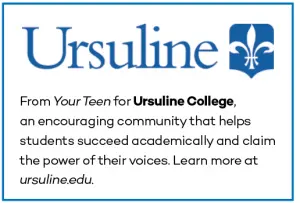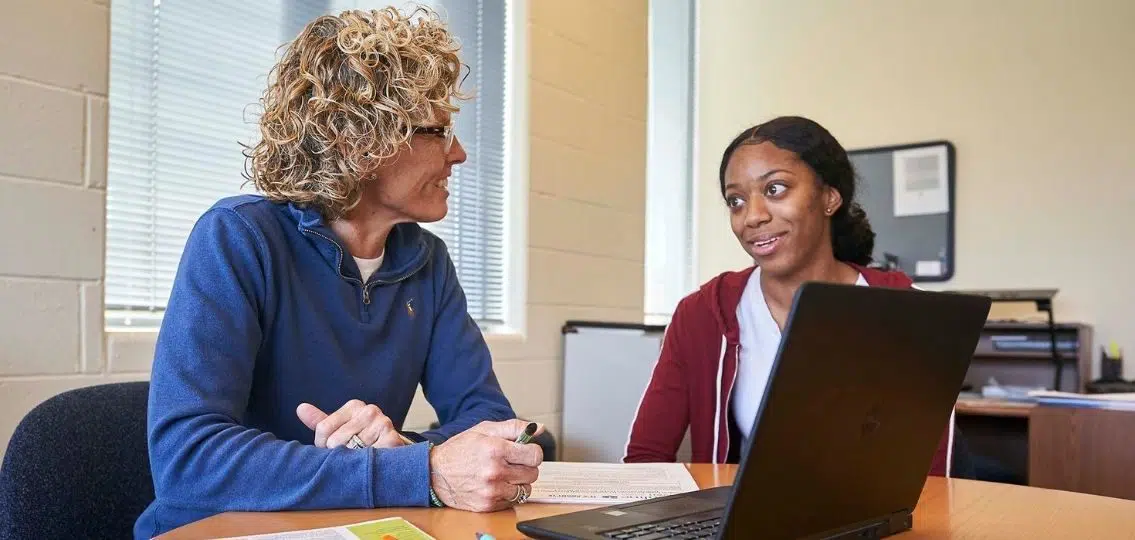When my kids were college shopping, it became immediately apparent that “one size doesn’t fit all” when it comes to college campuses. Two of mine ended up at a large state university, while the third found that a smaller campus offered the sense of belonging he was seeking. However, he knows that his desired career trajectory will likely involve a graduate degree that will eventually lead him to a larger school. Should he have just started there instead?

Building Confidence in a Smaller Pond
Why not just start at the larger school? For some students that is the right path, but a smaller universities can be ideal for students looking for more individualized attention. At a smaller school, students don’t sit in a huge lecture hall with 300-plus students, where a teacher’s assistant often handles much of the instruction, points out Elizabeth Kavran, Dean of the School of Arts, Sciences & Professional Studies at Ursuline College.
“With classrooms of 25 or fewer students, full-time tenured faculty lead discussions using the Socratic method. That means students have the chance to actively participate in these dynamic sessions,” she says.
| [adrotate banner=”235″] |
With fewer students, faculty are able to get to know students personally, allowing them to tailor their advice on research topics, majors, and graduate school programs. “As a parent, I found it to be a huge advantage that my children got to know their faculty members as researchers, with the opportunity to work alongside them,” Kavran says.
Moving to a Bigger Pond
After creating a firm foundation at a small school, many students then feel more ready for grad school at a large university. That’s where it can be helpful to attend a college that has established relationships with larger universities to streamline the application process. In Ursuline’s case, students can take undergrad programs in medicine/dentistry/veterinary, pharmacy, law, and engineering and then transfer to partner institutions—Lake Erie College of Medicine, Duquesne University, Cleveland Marshall College of Law, and University of Dayton, respectively—to complete their graduate degrees.
“By the time your child is ready to advance to the graduate level, they have gained self-confidence and independence, and are equipped with study skills, mentors, and leadership opportunities that can help them navigate a graduate program, and subsequently their professional life,” Kavran says.
Keeping Their Options Open
Of course, not every high school senior knows what path they want to pursue, which is why it’s important to keep their options open as they consider their undergraduate program.
A small school can help with that exploration through numerous options for involvement, such as joining clubs, taking on leadership roles, and working with faculty to gain an inside look at what a particular profession’s path would entail.
Kavran recommends checking whether the schools you’re considering can help your student access specific pre-requisites that will set them up for acceptance into graduate programs. “At Ursuline, we work with the graduate program faculty and staff to map out the requirements so there are no ‘wasted’ courses. The advisors are in communication with their partner graduate programs to keep students on the right track for a smooth transfer.”
Saving Time and Money
While discovery is a key part of the college experience, some teens have done enough research through shadowing, internships, or other activities to know their career goals. If that’s the case for your student, it’s wise to choose a school with established feeder programs that match their educational objectives—and save tuition dollars into the bargain.
For example, the combination law program at Ursuline offers a “3+2” curriculum—three years of undergrad school supplemented by two years of law school. (Typically, law school is three years, so Ursuline’s program reduces the total time to a law degree from seven to five years!) Other benefits of the various pre-professional programs can include an automatic entrance (assuming all requirements are met) or the ability to skip stressful graduate entrance exams.
Ultimately, choosing a college is our teen’s journey, but as parents we have a vital role to play by helping them sift through the many available options. Whether they want to go big or start small, the baseline advice applies: Make sure they have access to programs and activities that interest them, in a place where they can grow and thrive.
